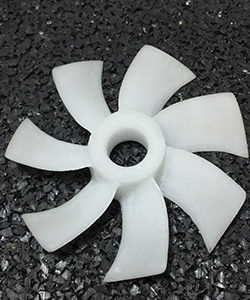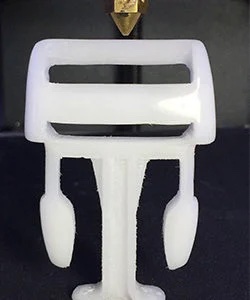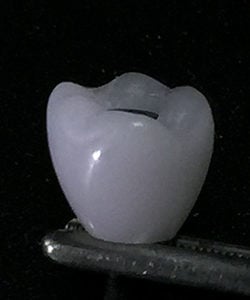All You Need to Know About POM for 3D Printing
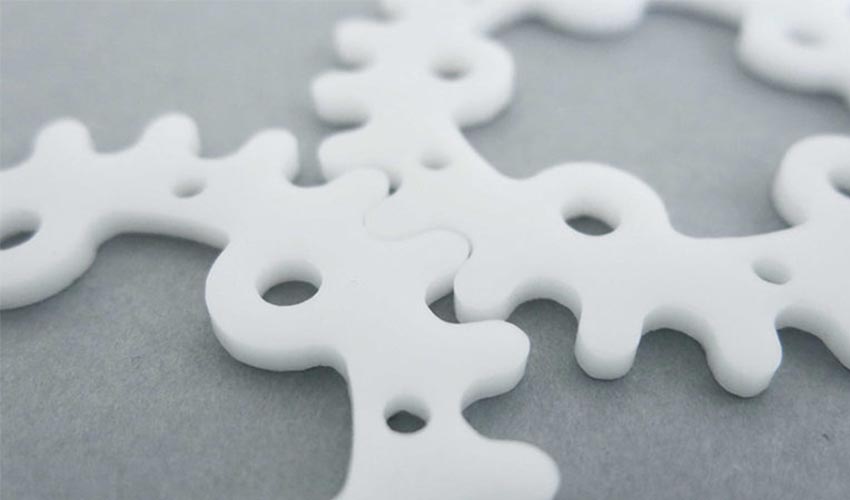
Polyoxymethylene, better known as POM, is a thermoplastic used that is considered to be engineer-grade due to its properties. Discovered in 1920, it is currently one of the most widely used materials for injection molding, after polypropylene (PP) and polyamide (PA). It is also becoming increasingly popular in 3D printing. POM is semi-crystalline (it has both amorphous and crystalline zones) and is white.
POM comes in two different forms: the homopolymer (POM-H), marketed by DuPont in the 1950s, and the copolymer (POM-C), marketed by Celanese in the 1960s. While POM-H consists of a single type of monomer, POM-C is composed of several types of monomers. As a reminder, monomers are reactive molecules that can combine to form polymers. The main difference between the two is that POM-H has better mechanical properties, but is less resistant to UV light. POM-C meanwhile has better thermal and chemical properties and therefore reacts better to temperature changes and chemical influences. For these reasons, it is POM-C that is mainly used in 3D printing, also because it is easier to extrude. Please note that in the 3D printing industry, POM is mainly available as a filament, so we will focus on this form.
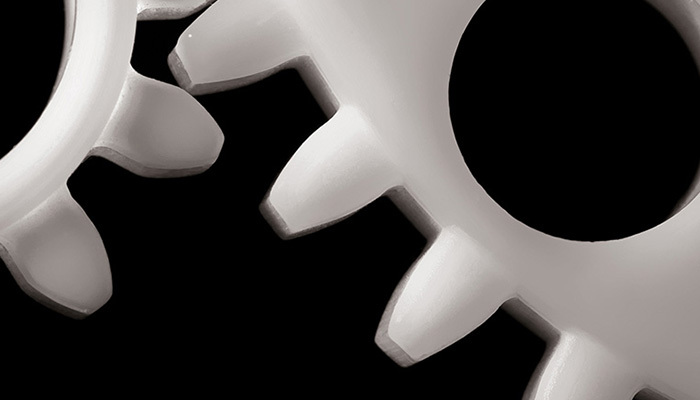
POM is available in white and easily colorable
Production and Characteristics of POM
In regard to the manufacturing of POM, a distinction must be made between homopolymer and copolymer. POM-H is mainly produced by the direct polymerization of formaldehyde. However, the material can also be produced by transition metal-centered cationic polymerization of trioxane (-CH2-O-)3. The end groups of POM-H are also closed by etherification and esterification to make the structure more stable with respect to the influence of acids or thermal loading. On the other hand, POM-C is produced by copolymerization of trioxane with dioxolane. To ensure stability, unstable end groups are degraded to formaldehyde by hydrolysis.
But what are the properties of POM? Polymethylene is characterized by its excellent chemical properties, which make it both heat-resistant and relatively unaffected by temperature, so that a part printed with POM remains stable and does not deform, even at temperatures between -40 and +140°C. It also has very low moisture absorption and good electrical insulation. In addition, it is impact and abrasion resistant and has a low coefficent of friction. The impact resistance of parts made of POM is due in particular to the very good adhesion between the layers.
POM Plastic in 3D Printing
When printing POM, keep in mind that your 3D printer should be equipped with a heated build plate, as adhering to the plate is often very difficult due to the slippery nature of the material. It is also important to know that printing POM can be less easy than printing other materials. First, your 3D printer must be able to reach an extrusion temperature of 220 to 230°C. It is also very important to properly manage the temperature during the printing process in order to achieve a high-quality result. Especially for beginners, it is often necessary to carry out a test print first in order to become familiar with the necessary parameters of the part to be printed. It should also be taken into account that the printing process generates formaldehyde, a toxic gas. For this reason, you should ensure that the room is well ventilated and that you are adequately protected.
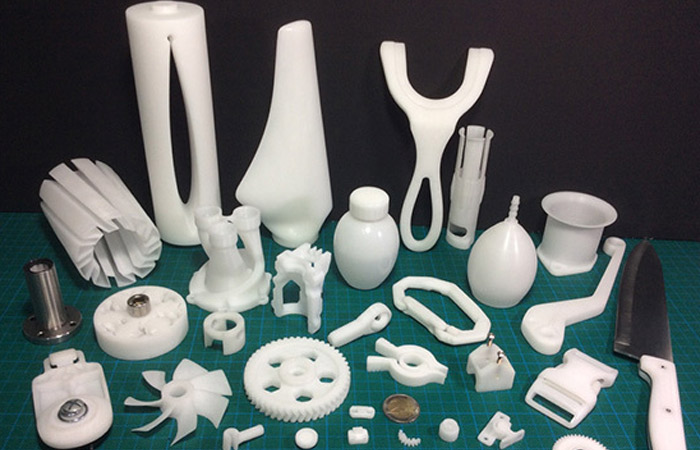
POM can be used in many ways, but you must take safety precautions when printing (photo credits: Jean-Charles Vingiano)
Applications of Polyethylene
Thanks to POM’s mechanical properties and its white color, which can be easily colored, the material lends itself to a wide range of possible applications in the automotive sector, the medical sector, packaging production and high-precision engineering technologies. Furthermore, as POM is chemical-resistant, it can be disinfected without any problems, which makes its use in the medical field particularly attractive. Its mechanical and chemical properties are also a factor – it is even possible to manufacture implants for this sector.
Not to mention, its impact resistance and low friction, as well as its good sliding properties, make it suitable for making small gears and items such as backpack buckles. POM can also be used for parts exposed to heat, such as heating ovens. Its white color also makes it suitable for the manufacture of aesthetic parts, such as car interior fittings.
- Photo Credits: Jean-Charles Vingiano
Manufacturers & Prices
The number of manufacturers that offer POM as a filament is less than for other filaments such as ABS or PLA for example. One of the manufacturers of POM is Capifil. This one offers POM spools in white, natural and black. All three colors can be purchased in either the 1.75 or 2.85 mm filament size for a price of €39.99 per 1 kg spool. Polish chemical group Grupa Azoty S.A. also offers natural colored POM filaments. The price for a 500 g spool in size 1.75 mm is €44.90. Another manufacturer is Ensinger, which offers TECAFIL POM-C in 1.75 size in the natural POM color. However, at €140 per 500g coil, the product is in a much higher price segment.
Do you use POM for 3D printing? What do you think of this material? Let us know in a comment below or on our LinkedIn, Facebook, and Twitter pages! Don’t forget to sign up for our free weekly Newsletter here, the latest 3D printing news straight to your inbox! You can also find all our videos on our YouTube channel
*Cover Photo Credits: Sculpteo






